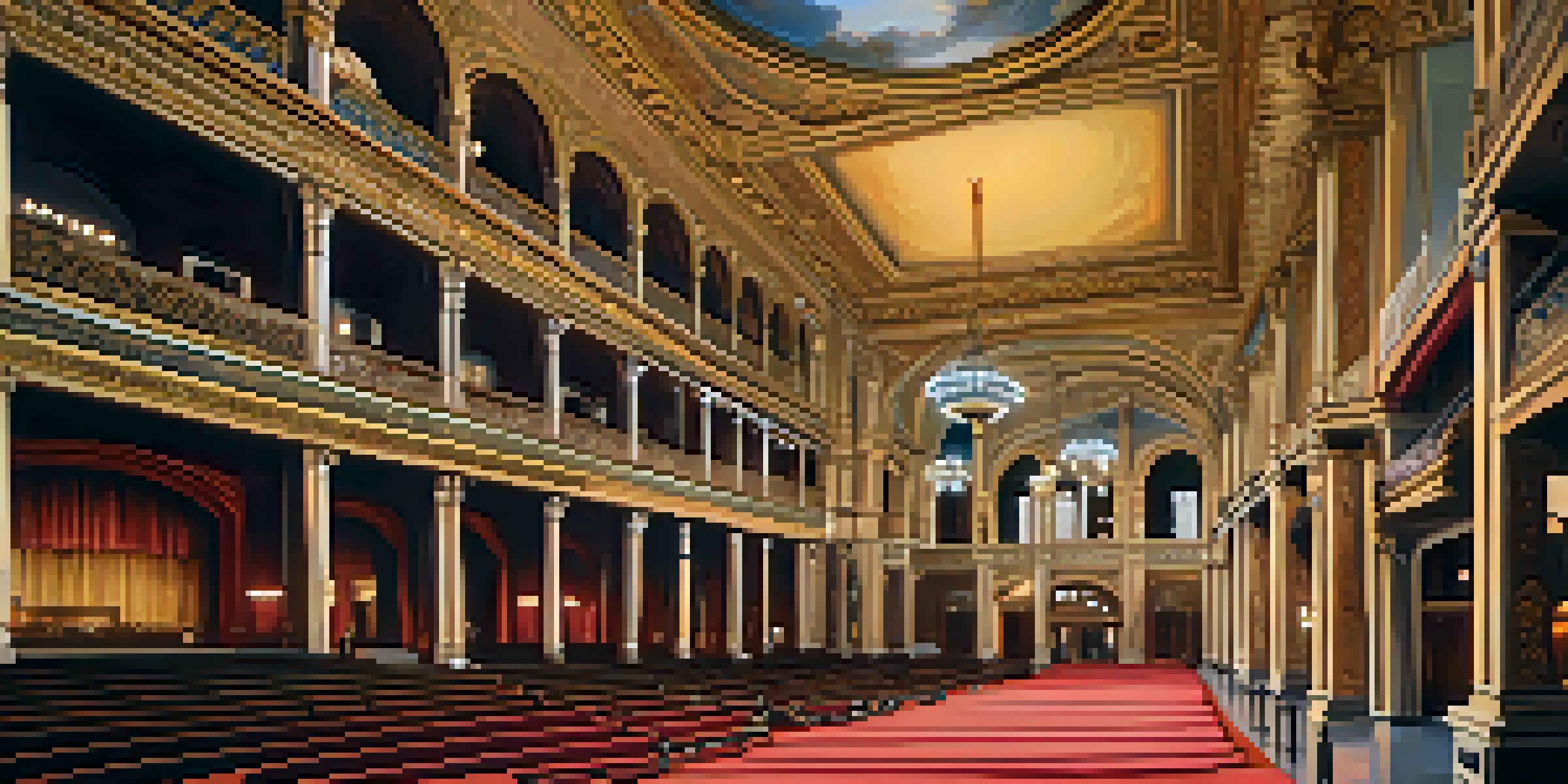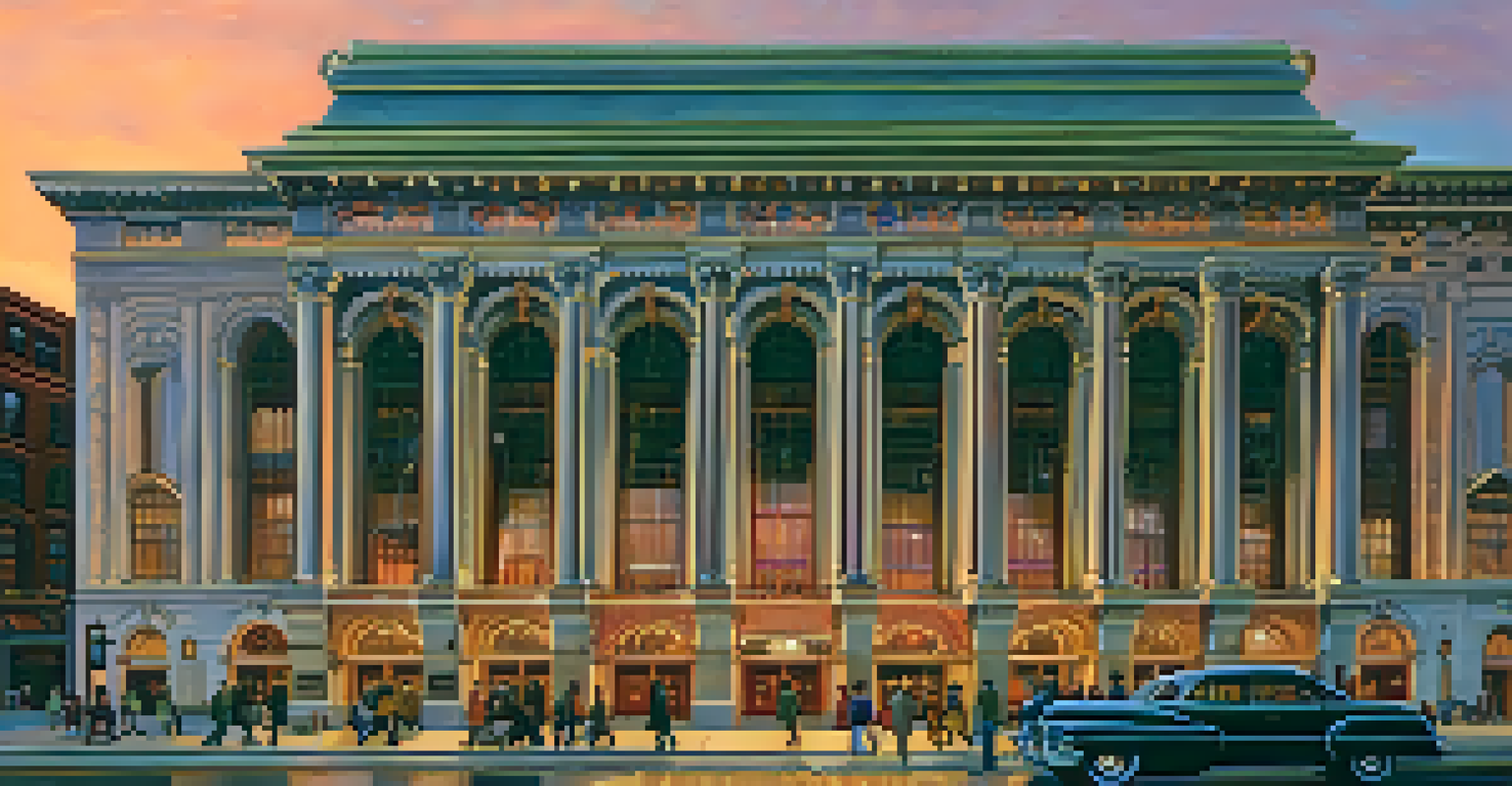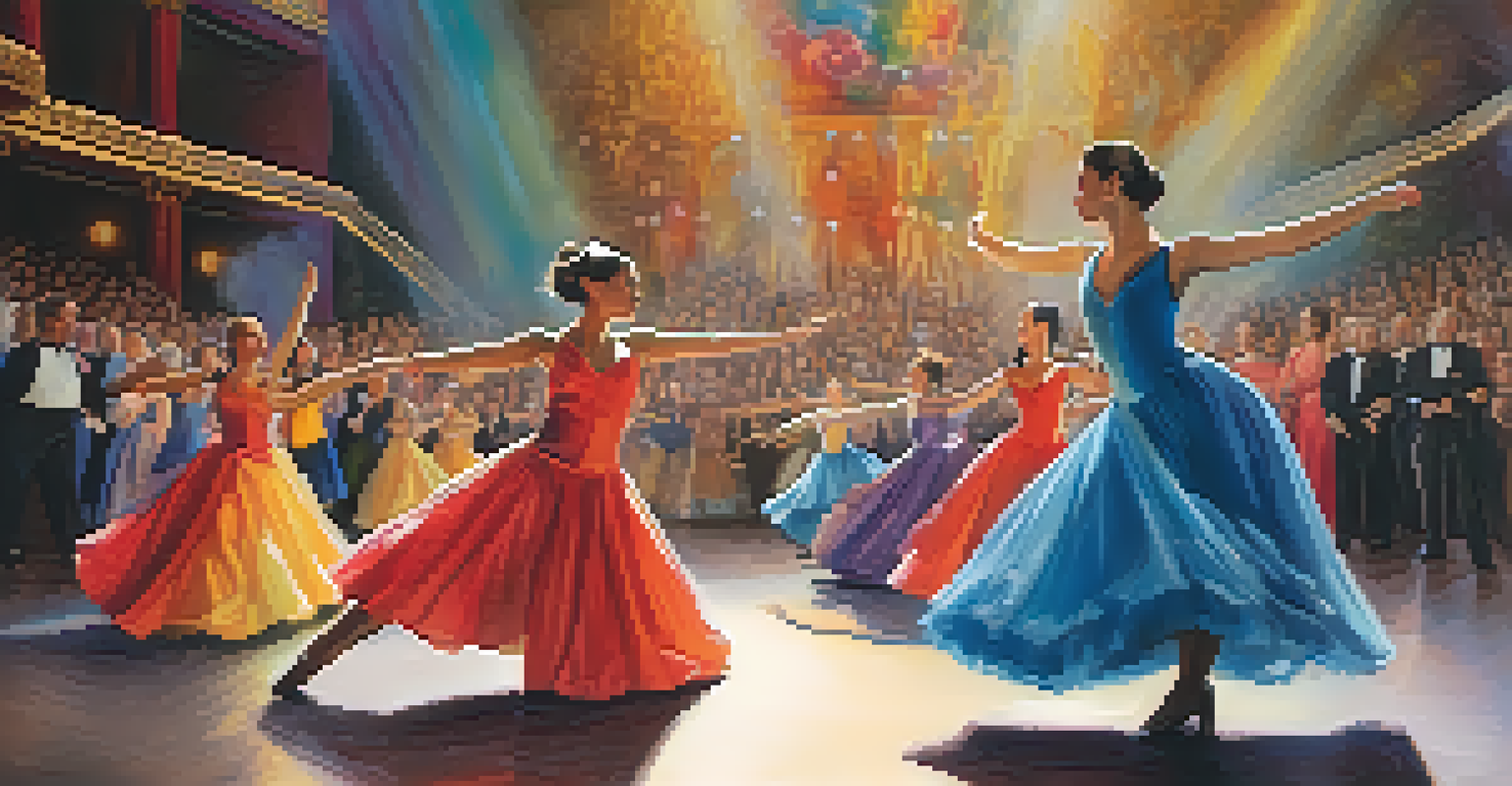The Detroit Opera House: A Cultural Landmark in the City

A Brief History of the Detroit Opera House
The Detroit Opera House has a rich history that dates back to 1922, originally opening as the Capitol Theatre. With its stunning architecture and opulent interiors, it quickly became a beloved venue for live performances in the city. The theater was renovated and reopened as the Detroit Opera House in 1996, marking a new chapter in its storied legacy.
The arts are not a luxury; they are a necessity for a healthy society.
Over the decades, this cultural landmark has witnessed countless performances, from grand operas to contemporary ballets. Its transformation reflects not only a commitment to the arts but also a dedication to preserving Detroit's cultural heritage. The opera house stands as a testament to the city's resilience and artistic spirit.
Today, the Detroit Opera House is not just a venue; it’s a symbol of community, creativity, and collaboration. It continues to attract local and international talent, making it a pivotal part of Detroit's arts scene. Visitors often leave with a renewed appreciation for the performing arts and the city's vibrant culture.
Architectural Beauty and Design
One of the most striking features of the Detroit Opera House is its breathtaking architecture. Designed in the Beaux-Arts style, the building boasts intricate details and lavish ornamentation that transport visitors to a different era. The grand foyer welcomes guests with its high ceilings, elegant chandeliers, and vibrant murals, setting the stage for an unforgettable experience.

The auditorium itself is designed for optimal acoustics, ensuring that every note resonates beautifully. With a seating capacity of over 2,700, it provides an intimate yet grand atmosphere for performances. The combination of historical charm and modern amenities makes it a favorite among both audiences and performers.
Historic Venue for the Arts
The Detroit Opera House, originally opened in 1922, has transformed into a cultural landmark that showcases a diverse range of performances.
Moreover, the opera house is home to a stunning collection of artwork that enhances its cultural significance. From murals to sculptures, the art reflects the rich history of Detroit and its community. This creative environment serves as inspiration for artists and audiences alike, making each visit a feast for the senses.
A Hub for Diverse Performances
The Detroit Opera House is renowned for its diverse range of performances, catering to a wide array of tastes. From classical operas to contemporary dance, the venue embraces all forms of artistic expression. This inclusivity not only enriches the local culture but also attracts audiences from across the globe.
Art is the most beautiful of all lies.
Throughout the year, the opera house hosts an exciting lineup of events, including seasonal performances by the Michigan Opera Theatre. Additionally, the venue is a stage for national tours, Broadway shows, and special concerts, ensuring there’s something for everyone. This variety makes it a vital part of the cultural landscape in Detroit.
Moreover, the opera house engages with the community through educational programs and outreach initiatives. These efforts aim to inspire the next generation of artists and audience members, creating a lasting impact beyond the stage. By fostering a love for the arts, the Detroit Opera House helps to ensure that the performing arts continue to thrive in the city.
Community Engagement and Education
The Detroit Opera House is more than just a performance venue; it is deeply committed to community engagement and education. Through various outreach programs, the opera house connects with local schools and organizations, providing opportunities for students to explore the arts. These initiatives help cultivate a love for creativity and expression among young people.
Workshops, masterclasses, and interactive sessions are designed to introduce participants to various aspects of performance and production. This hands-on approach not only enhances their understanding of the arts but also allows them to develop their skills. By investing in the community, the opera house fosters a sense of belonging and pride.
Community Engagement Focus
Through educational programs and outreach initiatives, the opera house fosters a love for the arts and strengthens its connection with the Detroit community.
In addition to educational programs, the Detroit Opera House often collaborates with local artists and organizations. These partnerships help promote a diverse range of performances and events, ensuring that the cultural landscape remains vibrant and inclusive. This commitment to community strengthens the bond between the opera house and the people of Detroit.
The Role of the Michigan Opera Theatre
The Michigan Opera Theatre (MOT) plays a crucial role in the functioning of the Detroit Opera House. As the resident opera company, MOT is responsible for producing a variety of performances that showcase both classic and contemporary works. This partnership has greatly enhanced the cultural offerings of the theater, making it a destination for opera enthusiasts.
MOT is dedicated to artistic excellence and has garnered national recognition for its productions. The company not only focuses on traditional operas but also commissions new works, pushing the boundaries of the genre. This innovative approach keeps the performances fresh and relevant, attracting a diverse audience.
In addition to its mainstage productions, MOT is committed to community engagement and outreach. The company often collaborates with local schools, providing educational resources and performances tailored to students. This dedication to fostering a love for opera ensures that the art form continues to thrive in Detroit for generations to come.
Visitor Experience and Amenities
The visitor experience at the Detroit Opera House is designed to be as enjoyable and accessible as possible. From the moment you arrive, the inviting atmosphere and friendly staff make you feel welcome. The venue offers a range of amenities, including comfortable seating, excellent sightlines, and state-of-the-art sound systems to enhance your experience.
Before the show, guests can enjoy a meal at one of the nearby restaurants or grab a drink at the venue's bar. Pre-show discussions and behind-the-scenes tours are also available, allowing visitors to delve deeper into the world of opera and theater. These experiences enrich your understanding and appreciation of the performances.
Home of Michigan Opera Theatre
As the resident company, the Michigan Opera Theatre enhances the opera house’s offerings with both classic and contemporary productions.
Furthermore, the Detroit Opera House is committed to accessibility for all patrons. With wheelchair-accessible seating and services for those with hearing impairments, every effort is made to ensure that everyone can enjoy the magic of live performances. This dedication to inclusivity truly reflects the spirit of the Detroit community.
Conclusion: A Cultural Treasure for Future Generations
In conclusion, the Detroit Opera House stands as a cultural treasure in the heart of the city. Its rich history, stunning architecture, and diverse performances make it a vital part of Detroit's arts scene. As a hub for creativity and community engagement, it continues to inspire and entertain audiences of all ages.
The commitment to education and outreach ensures that the legacy of the opera house will live on for future generations. By fostering a love for the arts, the venue plays a crucial role in shaping the cultural landscape of Detroit. It’s not just a place to watch a show; it’s a space where art and community come together.

As the Detroit Opera House continues to evolve, it remains dedicated to its mission of enriching lives through the power of performance. Whether you’re a lifelong opera lover or a curious newcomer, a visit to this iconic landmark promises to be an unforgettable experience that celebrates the rich tapestry of human expression.